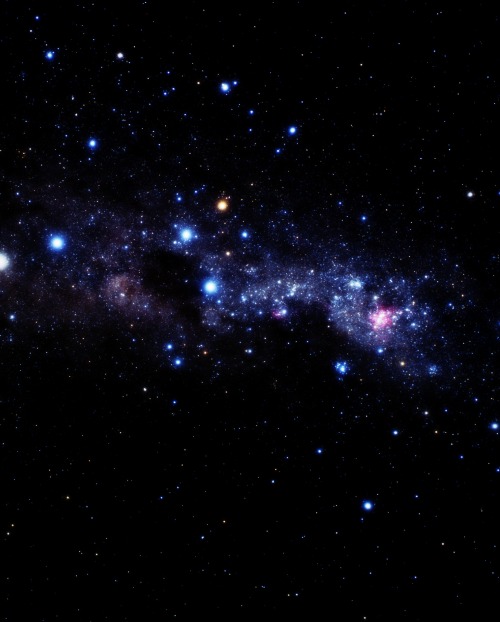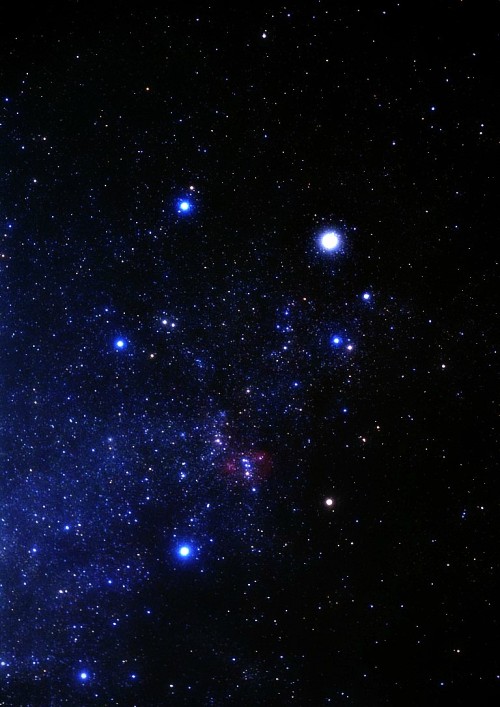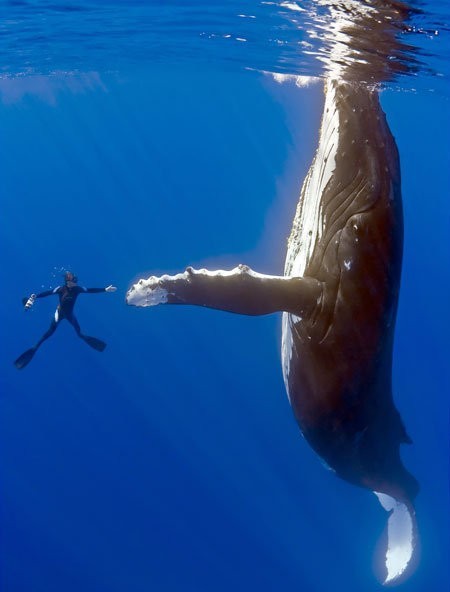I’m Upset Because I Want To Change The World But The World Is Too Big And People Are Too Mean
I’m upset because I want to change the world but the world is too big and people are too mean
More Posts from Outofambit and Others
Ocean Ramsey and her team encountered this 20 ft Great White Shark near the island of Oahu, Hawaii. It is believed to be the biggest ever recorded
It gave Kit an annoyed look. “All right, so I’m ambivalent,” the Lone One said. “But isn’t ambivalence preferable to pure evil?” Kit considered that one for a moment. “See? You’re buying it already,” the Lone One said. “I was getting bored with absolute evil, anyway. I find that you can do lots more damage with ambivalence. … "People are eager to excuse it, though. Ambivalence is seen as a sign of maturity, wheras actually taking a stance on one side or another is easy to describe as simplistic. Or unsophisticated. Or juvenile."
-Wizard’s Holiday by Diane Duane
[yells to the heavens] THIS IS WHY I LOVE YA LIIIIIT
(via trailofdesire)


Crux and Auriga
‘fairest and fallen, greetings and defiance’ is still the best Stock Greeting For Our Ancient Enemy ever. it’s got everything. (1) you’re hot (2) you’re evil (3) respect tho (4) anyway i’m here to kick your ass
Reasons the Young Wizards series is wonderful: there’s a scene that can be described as “Tiny kitten Roasts Satan” and it’s the best thing ever
What is an Ocean but a Multitude of Drops?
I’ve been pondering the recurring notion in Young Wizards—introduced in the first book—that “even…unmagical-seeming actions” have importance in the fight against entropy. Whether it’s turning the lights off when one leaves a room, having a kind word for someone in need of encouragement, or just using the bus for transport to an alien mall crawl (“Wizards are supposed to use public transport—it’s ecologically sound!”), these little choices are no less important than galaxy-spanning fights with the Lone Power. And indeed, it’s often the little things—like Nita’s space pen or Ponch’s squirrels—that make the big victories possible.
It’s a concept that recurs in several of my other favorite works of fiction, as well. Rory’s father, Brian, from the most recent season of Doctor Who springs immediately to mind. A down-to-earth sort, Brian spends his screentime changing lightbulbs, carefully watching alien artifacts for days on end, and throwing golf balls for nearby dinosaurs to play fetch with. Unlike most of the Doctor’s associates, he doesn’t progress from these humble beginnings into something “remarkable”—he never becomes immortal or the Bad Wolf or anything like that. But instead, his very mundane habits are exactly what’s needed to save the world on multiple occasions. And when the Doctor offers to let him travel across time and space full-time, his response is simply, “Somebody’s got to water the plants.”
I bring this up because it’s a rather uncommon line of thought, on the whole. Far more common is the desire to change oneself, to journey forth from humble origins and grow into something great, to leave a mark on the world. But examples like the ones I mentioned above suggest that perhaps we’re not on the way to doing something remarkable—we already are, from one day to the next.
In the final lines of Cloud Atlas, both the book and the film (I heartily recommend either, incidentally), one of the protagonists ponders the notion that his efforts to change the world only amount to “a single drop in a limitless ocean.”
"But what is an ocean," he concludes, "but a multitude of drops?"
The same, I think, applies to all of us. We may not all be heroes or luminaries who command the destinies of millions, but within the smaller confines of our individual lives, every choice we embark upon makes a difference. And ultimately, the whole of human history is comprised of nothing else but people making decisions, many of them seemingly unimportant, one day at a time. Taken all together, though, it adds up to something remarkable. No man is an island, and every rock idly tossed into a pond produces ripples.
It’s both encouraging and terrifying to think about.
You know, I think the biggest disappointment of my childhood was not failing to receive my Hogwart’s letter (or the American equivalent). I mean yes, there was a stretch the summer I was eleven where I was hopeful, but September first came around and I sort of shrugged and accepted it (possibly with some relief because I didn’t want to go so far away from Mama and Da).
No. The real disappointment was that the Wizard’s Oath from Diane Duane’s Young Wizards never took. I don’t know how many times I read that oath out loud and then held my breath and hoped. Hoped, hoped, hoped that I would wake up the next morning and the book wouldn’t just be Nita and Kit’s adventure, but would be in the Speech. It never was.
Keep reading
My boyfriend would like to know what a Godiva chocolate bar would run on the galactic market? I wasn't sure, given what you had said about Hershey bars, since I don't have a frame of reference.
Well, obviously there’s a lot of room for subjectivity about this. Some collectors (Galactic or otherwise) will feel differently. But generally speaking, I suspect the collectors’ opinions will roughly match mine.
Ranking gets complicated because old chocolate companies and brands keep getting bought by bigger companies / conglomerates, and the brands and the quality of their chocolate tend to suffer as a result. By and large, though, the best chocolate tends to be made by companies that do so-called “bean-to-bar” production. The longer the history of this, the better. In general, artisanal chocolate, especially single estate/single bean chocolate, and organic and free-trade chocolates, will also be preferred by the discerning intergalactic collector.
Ranking chocolate from worst to best: (and yes, for those who’re wondering, I’ve eaten all of these, normally on their home turf):
North American chocolate: Almost routinely no better than poor-to-middlin’ quality: the bigger the producer, routinely, the worse, as they keep trying to do it cheaply and good chocolate can’t be done cheaply. It’s too energy-intensive, especially as regards the time and energy required in the conching process that’s absolutely key in giving merely okay chocolate a chance to become great. Hershey’s is the worst of the lot because they’re purposely catering to that spoiled-milk taste that’s become traditional for them. …The exceptions to the poor-to-meh quality rule are invariably smaller producers like Ghirardelli. Meanwhile it should probably be no surprise that when the Lexington Avenue Local worldgate was resited following the refurbishment of Grand Central Terminal, it wound up behind Li-Lac Chocolate’s satellite branch in the food hall. One might suspect Carmela’s straightforward hand in this.
European-based chocolate generally: Significantly better. …Subdividing into:
British Isles chocolate: Pretty good most of the time. Many small classic brands (Fry’s, Rowntree) were subsumed into bigger British chocolate companies over time, with only slow degradation of general quality. Cadburys is probably at the top of the heap, despite what’s happened to the Creme Egg over the years. (mutter) …And naturally I would be remiss in not mentioning, on the Irish side, Lir, Lily O’Brien’s, and Butlers. (When we go to visit friends in Switzerland, we bring them Lir.) Additionally, there are people who are vocal about their claims that Irish Cadburys is better than British Cadburys, due to local/regional differences in the mix. Myself, I refuse to get mixed up in local chocosectarian stuff. Life’s too short.
Italian and French chocolate: Perugina, Valrhona (as in “I’d rather be in Valrhona than Valhalla”), Callebaut, Agostoni, Amedei, and Bernachon stand out. There are many more smaller makers in the region worth looking out for: check this list for some.
Belgian chocolate: Almost always really good, even at the mass-produced end (Guylian); sometimes terrific (Leonidas) or more than terrific (Neuhaus, Galler, Dumon). This is where Godiva fits in. (I first had it when its initial New York store opened in 1972: it was far better then than it is now. Then again, having been owned by Campbell’s Soup can’t have been good for them.)
Swiss chocolate: Probably the best: certainly routinely seen as such (and collectors will be aware of the implications of this). Again, the smaller the producer the better. The great/old houses like Lindt and Sprüngli are being given a run for their money by newer competitors like Teuscher and Läderach (attn @petermorwood: Stengli!!).
…I’ll complete this later as I just splashed some tea on my keyboard and I seem to have a membrane problem. (sigh)
(Resuming after prying off all the keycaps and cleaning out what could have been the start of a small tool-using civilization if it was let go much longer:)
So anyway, we were attempting to tease out how Godiva would do on the Galactic chocolate collectors’ market.
It’s all so relative. But there are a number of different factors in play, so better to take them one by one.
(a) Provenance / authenticity. Real Chocolate From Earth (SM*) still has to be specified, these days, in some parts of the Galaxy: as with any unique collectible, there are always counterfeits out there. But none of them work perfectly, not even those produced by atom-by-atom matter duplication. There’s just something about genuine Earth-grown cocoa beans that cannot be duplicated. (If we pulled Dr. McCoy into this discussion he’d simply snort and say, “It’s soul. Why d’y’think I hate that damn transporter so much?”) And the bad fakes… (shudder) Well. You know the correlation between flavors (and everything else) of chocolate versus carob? The comparison between real chocolate and bad fake chocolate is like that. But generally worse.
(b) Reputation and/or scarcity on planet of origin. Godiva is not hard to find, but its lower-end-of-high-midrange reputation would affect the going price. Many artisanals or single-estates would bring in much, much more on the collectors’ market. But Godiva still would not be cheap.
© Freshness and state of packaging. Fresh and perfectly packaged Godiva obtained before the first of the large corporate acquisitions via timeslide would bring a way higher price than the stuff available on the high street right now.
(d) The present state of cocoa futures. Believe me when I tell you that none of Earth’s financial markets are so closely scrutinized off-planet as the cocoa futures market. A serious ripple in the world’s cocoa production figures can send shockwaves through the collectibles and personal-chemical-enhancements markets galaxy wide (in the latter case, for those species who use chocolate as an aphrodisiac, mood-altering drug or hallucinogen). If anything was going to bring on the classic aliens-arrive-from-space-to-save-Earth-from-itself scenario, it would be news that we had fucked up our climate so totally that the cocoa bean was going to die out. The intervention wouldn’t happen because of any particular altruism, oh dear me no… but because with the death of Earth’s cocoa, many extremely currency-sensitive aspects of the Galactic economy would take a hit that would make the Earth’s recent nearly-worldwide-bank meltdown look like an insolvency involving a kid’s lemonade stand.
Anyway, the state of the market pushes the day to day price of collectible chocolate up and down in unpredictable but interesting ways, and the smart investor keeps its ears (or legs or abdomen or whatever it listens with) to the ground to stay informed about what’s going on in Earth’s so-called “soft commodities” markets.
(e) Preparation. How much actual chocolate is in the confectionery and how has it been prepared? Plain solid chocolate is always preferable for collectors’ purposes. (The two-pound solid chocolate ingots that Kron Chocolatier in Manhattan used to sell back in the day would have been seen as very choice.) Dark chocolate is always preferable to milk: the milk is seen as an adulteration, as 18K gold is seen as inferior to 24K by precious-metal collectors. Some additives, if psychoactive or otherwise seen as valuable on their own, are viewed as positive (see the chocolate business with Nita and Kit at the Crossings here.)
(f) Demand. Is the product hot right now? Has some buzz about it in the collectors’ networks kicked the price up for some reason?
…And there are other factors, but you get the general idea. So if you were offering a Godiva bar on the open market, say one of these, depending on where you planned to do your shopping afterwards you could probably exchange it for enough currency in one of the smaller spacefaring cultures that’s chocolate-using in one of the valuable ways (meaning as a recreational chemical) to get yourself a small private island on some planet where the climate suited you. Or a nice little space yacht. (Nothing really huge. After all, you need to pay for crew services too, and berthing, and… Never mind.)
Hope this helps. :)
*Service mark is the property of Gaia Protectorate CRLLC: for more information see here.
-
 blainetm reblogged this · 1 week ago
blainetm reblogged this · 1 week ago -
 bea-sthetic reblogged this · 2 weeks ago
bea-sthetic reblogged this · 2 weeks ago -
 bea-sthetic liked this · 2 weeks ago
bea-sthetic liked this · 2 weeks ago -
 esraamohy reblogged this · 3 weeks ago
esraamohy reblogged this · 3 weeks ago -
 onceuponadreamgirl reblogged this · 1 month ago
onceuponadreamgirl reblogged this · 1 month ago -
 rsfunpostmachine reblogged this · 1 month ago
rsfunpostmachine reblogged this · 1 month ago -
 monis2family reblogged this · 1 month ago
monis2family reblogged this · 1 month ago -
 monis2family reblogged this · 1 month ago
monis2family reblogged this · 1 month ago -
 kareman-gaza3 reblogged this · 1 month ago
kareman-gaza3 reblogged this · 1 month ago -
 kareman-gaza3 reblogged this · 1 month ago
kareman-gaza3 reblogged this · 1 month ago -
 kareman-gaza3 reblogged this · 1 month ago
kareman-gaza3 reblogged this · 1 month ago -
 kareman-gaza3 reblogged this · 1 month ago
kareman-gaza3 reblogged this · 1 month ago -
 the-letter-horror-lover liked this · 1 month ago
the-letter-horror-lover liked this · 1 month ago -
 kareman-gaza3 reblogged this · 1 month ago
kareman-gaza3 reblogged this · 1 month ago -
 kareman-gaza3 reblogged this · 1 month ago
kareman-gaza3 reblogged this · 1 month ago -
 kareman-gaza3 reblogged this · 1 month ago
kareman-gaza3 reblogged this · 1 month ago -
 kareman-gaza3 reblogged this · 1 month ago
kareman-gaza3 reblogged this · 1 month ago -
 kareman20dohan reblogged this · 2 months ago
kareman20dohan reblogged this · 2 months ago -
 mashedpaintatoes reblogged this · 2 months ago
mashedpaintatoes reblogged this · 2 months ago -
 skele8rity liked this · 2 months ago
skele8rity liked this · 2 months ago -
 chimaeragryph reblogged this · 2 months ago
chimaeragryph reblogged this · 2 months ago -
 monis2family reblogged this · 2 months ago
monis2family reblogged this · 2 months ago -
 asianallures liked this · 2 months ago
asianallures liked this · 2 months ago -
 belalgaza89 reblogged this · 2 months ago
belalgaza89 reblogged this · 2 months ago -
 explorer-0421 liked this · 2 months ago
explorer-0421 liked this · 2 months ago -
 liizarrd-queen reblogged this · 2 months ago
liizarrd-queen reblogged this · 2 months ago -
 nana1nn reblogged this · 2 months ago
nana1nn reblogged this · 2 months ago -
 neomikey reblogged this · 2 months ago
neomikey reblogged this · 2 months ago -
 the-pikachu-birb liked this · 2 months ago
the-pikachu-birb liked this · 2 months ago -
 epsilon500 reblogged this · 2 months ago
epsilon500 reblogged this · 2 months ago -
 fhknbfy liked this · 2 months ago
fhknbfy liked this · 2 months ago -
 thatonesoprano14 liked this · 3 months ago
thatonesoprano14 liked this · 3 months ago -
 thetransitdept liked this · 3 months ago
thetransitdept liked this · 3 months ago -
 asma-family77 reblogged this · 3 months ago
asma-family77 reblogged this · 3 months ago -
 anwandter reblogged this · 3 months ago
anwandter reblogged this · 3 months ago -
 percyjacksonwriter reblogged this · 4 months ago
percyjacksonwriter reblogged this · 4 months ago -
 percyjacksonwriter liked this · 4 months ago
percyjacksonwriter liked this · 4 months ago -
 monis2family reblogged this · 4 months ago
monis2family reblogged this · 4 months ago -
 wordsaredelicious liked this · 4 months ago
wordsaredelicious liked this · 4 months ago -
 monis2family reblogged this · 4 months ago
monis2family reblogged this · 4 months ago -
 justforfollowingpeople liked this · 4 months ago
justforfollowingpeople liked this · 4 months ago -
 kiki-miserychic reblogged this · 4 months ago
kiki-miserychic reblogged this · 4 months ago -
 actiongrrl liked this · 5 months ago
actiongrrl liked this · 5 months ago -
 redhairedfox reblogged this · 5 months ago
redhairedfox reblogged this · 5 months ago -
 kanyniablue reblogged this · 5 months ago
kanyniablue reblogged this · 5 months ago
A personal temporospatial claudication for Young Wizards fandom-related posts and general space nonsense.
288 posts

